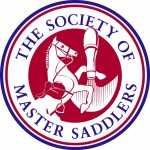Posted: 8th October 2015 | Back to news feed

When selecting the right noseband and indeed all tack, it is vital that it is chosen to suit the individual horse and its needs. It is important not to choose any item purely for aesthetic reasons, but rather to aid in achieving the potential of the horse whilst allowing it maximum comfort. There are a number of different types of noseband available and this feature will describe them and explain their uses.
The simplest form of noseband is the cavesson which is a plain band around the nose and can come in different styles. It can be flat and wide for a heavy hunter, thin and raised for a finer horse or pony or padded for extra comfort. The fastening can either be a simple buckle or a crank design which provides additional leverage to further tighten the noseband and also has extra padding. Crank nosebands are commonly seen on dressage horses.
The addition of a flash noseband to a bridle, which is attached to a central loop on a cavesson noseband, can give enhanced control as it can reduce a horse’s tendency to open its mouth and evade the bit. It can also help to centralise the bit, increasing its effectiveness. However, the usefulness of the flash depends on the individual horse and how they respond to it; it improves some horses’ way of going but some will resist it. It is important that the main noseband is fitted correctly (e.g. one to two fingers below the projecting cheekbones) and the flash is fastened so that two fingers can be slid all the way round.
For a more definite action to stop the mouth opening, the drop noseband can be used. The drop is fitted lower down on the horse’s head and sits above his nostrils, whilst the back fastens in the groove of his jaw. Again, some horses will respond well to it whilst others will dislike and work against it. When fitting the drop noseband, ensure that it is at least 6cm above the nostrils to avoid interference with breathing and don’t over tighten it.
For very strong pulling horses, the grakle noseband may be a solution to gain more control. It is illegal for British Dressage competitions but is permitted in all levels of eventing. This noseband is designed to help prevent the horse from crossing their jaw which is a common tactic used when trying to evade the contact and dominate the rider. The front crossover point of the design provides the main pressure point, with the top straps positioned just below the facial bones for comfort. It is important that both straps can fit at least one finger width between them and the jaw.Another design of grakle is the High Ring/Mexican grakle which has a ring either side of the face, fitted onto the flat cheeks of the horse. While having the same action as the standard grakle, the High Ring/Mexican grakle exerts pressure via the rings much higher up so increasing the area which the noseband affects.
Some horses don’t require a noseband at all and therefore don’t wear one. However, for competition it is better and often required to wear one so in this instance a non-restrictive cavesson noseband would be the best option.
A full list of Society of Master Saddlers members who will be able to give you help and advice and can supply ‘off the peg’ or bespoke bridlework can be found at www.mastersaddlers.co.uk or telephone 01449 711642.


The Equestrian Index newsfeed is compiled from articles submitted by advertising members and expresses the opinions of those members. Watsons Directories Ltd shall not be held liable for any inaccuracies or mis-statements therein.
